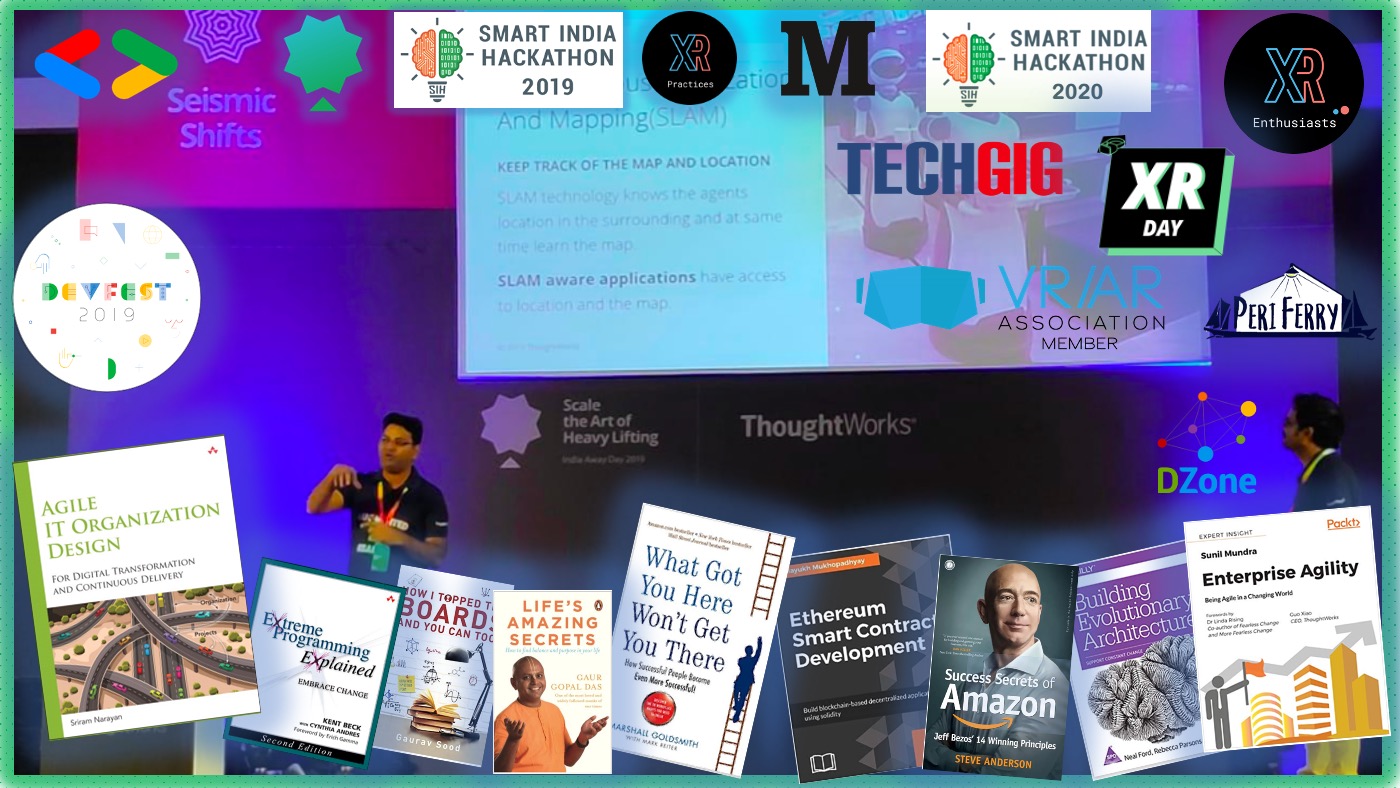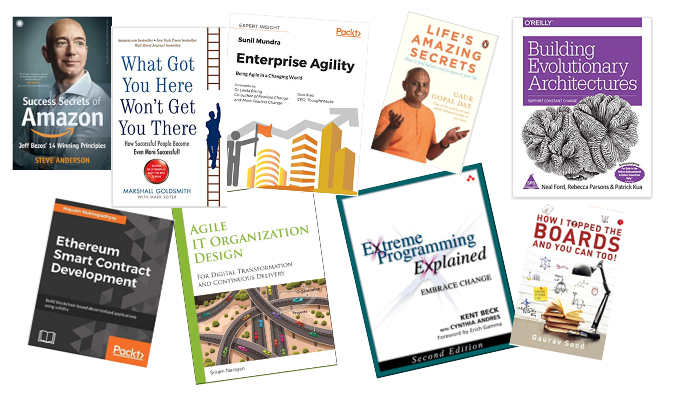Two Thoughtful Years!
- 9 minutes read - 1861 words
It’s now two years since I accepted a challenging change to leave the previous organization after 13 long years, and join ThoughtWorks. Any change requires sacrifices and dedication before it becomes a positive change, but the journey becomes easy when we believe in the change and accept it. A change introduces us to a new environment and enables new thoughts, and new energy. The two years journey at ThoughtWorks is no different.
Thoughtworks interview conversation leaves a long-lasting impact on people, and I was also influenced from the interview processes, and by the time I joined ThoughtWorks, I read and heard multiple things about ThoughtWorks, interesting culture, different ways of working, people-first organization, connection matters most here, and also how hard it would be for a lateral to get settled. Putting down other offers wasn’t easy, but I was kind of prepared to accept the challenge and joined ThoughtWorks with mixed feelings.
Here I am writing down the changes that happened around me, how I learned to sail in the sea of thoughts, and why do I call these two years as thoughtful years
Induction in ThoughtWorks
Initial few days I got the cultural dump, history, vision, who is who, office working structures, why we, etc. This is nothing different than other organizations. However, the interesting part started when I was asked to meet a number of people who were little settled in the organization or have gone through the journey I just started.
See what I got, a lot of inputs from different people, and most were talking about how ThoughtWorks is different and maybe difficult too. Some suggestions to go away with the baggage of titles/experience I was carrying, some suggestions were a little lighter asking to just go with the flow and take it easy. As a result, I got more confused.
Few things, I learned initially, were hard to absorb, like democratic decision making in delivery, too much transparency, combined ownership of each and everything (even we have two MDs for India), people signing up on their own, almost no hard structures in the team and organization. There are just 4 grades, I joined the highest grade here, but nothing to be proud about, no one talks about what grade you are in.
Now you are in a sea of people, build your network, create your influence, and influence the influencers. Choose your mentors, cultivators as so on, In short, define your own journey!
Welcome to ThoughtWorks, your journey starts now! If all of the above bothers you then yes it’s hard, but I followed a golden rule to observe more and react less. I liked the culture in theory but was more curious to know the things on the ground, and that’s where the next section starts.
Check the ground to build a strong foundation
I knew I have to change and learn new ways of working, but unless I believe in the to-be state it won’t be possible. Enough of theory, I wanted to see things on the ground, what does the word “Agile” mean here? How do the teams collaborate? How strong are the processes? What is so special about TW and TWers?
I signed up to start my TW’s journey from the ground and joined a super techie team as a developer, the team is working on a commodity trading solution in Blockchain and Microservices. Blockchain was new but I was well equipped in microservices-based development. I started taking functional stories, and writing code but was that that easy? It was time to test myself, TW, TWers, and get yourself tested by TWers. Listing here my below observations and learnings from the ground.
- Sign-up — Yes, you already get a hint in the last paragraph, people do sign-up here. I learned to move from the paradigm of “task assignment” to “sign-up”.
- Stand-up — Everyone shares updates on the tasks they have signed up, any issues or bottlenecks. The interesting part of stand-up is, it is run by anyone in the team, you don’t need a scrum-master/TL/PM role or special experience to do that, in fact, TL/PM remains silent here unless there is any update to share. Every other member carries the responsibility to maintain the discipline of stand-up, they raise the flag of any discussion going beyond the limit, and then you are supposed to pass on the discussion for a later time. Team sign-up for the next tasks, and inform the team if there is any call-out.
- eXtreme Programming (XP) in practice — I have seen XP in practice for the first time. To my surprise I was productive from day-1, no special induction, I started pairing with other developers after a project brief from Business Analyst. Every developer (irrespective of experience level) is so confident in talking about unit tests, their value, and knows the art of refactoring. The team is focused on maintaining the test pyramid, and reducing the feedback cycle with pair-programming, unit tests, DevBox, and automation testing. All these make TWers super agile. Thanks to the Dev BootCamp where I learned these XP concepts, I have also shared my learnings on test-first-pair development here.
- Huddle helps take better decisions — Team members call for a huddle to discuss any tech issue or bottleneck, and take input from the rest of the team before proceeding. It’s a collective decision by the team to go for a particular option, and it leads to a more confident decision and less burden on individuals. Even the estimation of stories/tasks are done collectively.
- Overlapping boundaries across roles — Business Analyst here is not just gathering requirements but also manages the scope of the project, iteration management, and prioritization with Product Owners. Project Managers (if any) are more focused on enabling the team, providing autonomy to the team, no wonder if one sees a PM pairing with people. QAs review the unit tests during DevBox, do active programming for automation test suites, and help BA is grooming stories with the right acceptance criteria.
- Learned blockchain technology and tried hands in streamlining architecture cross-cutting concerns.
This became a great platform for me to experience ThoughtWorks practices and build a network inside, outside the team. It has definitely built a strong foundation. I learned the “Agile” process means “what makes sense” here, the project teams decide how they want to run the project, no organization level enforcement.
Found new love in Reading Books
I was not a habitual book reader, this has changed now. ThoughtWorks gives a set of books as part of the joining kit, and also there is a yearly allowance to buy books. I must give credit to the books and their authors who helped me understand the ThoughtWorks analogy better and believe in it.

It started with Extreme Programming Explained by Kent Beck. Another book Agile IT Organization Design — For digital transformation and continuous delivery by Sriram Narayan explains software development as a design process, this book exactly represents ThoughtWorks as an organization, I have experienced most of the concept on the ground.
Another book that influenced me a lot is What Got You Here Won’t Get You There by Marshall Goldsmith. This book is my change enabler and motivates me to change for good, change to become better, I literally followed this book to change myself on some of the improvements I received in my feedback from colleagues. Yes, you get feedback upfront, no matter at what role you are, ThoughtWorks has great feedback culture imbibed in the project delivery practices.
Writing is an addiction
Just like reading, writing is also an addiction. We just need a good platform and motivation to do that. Just after joining ThoughtWorks, I realized that people write a lot, there are a number of books written by ThoughtWorks. It motivated me to set up my personal blog site thinkuldeep.com — the world of learning, sharing, and caring.
Welcome to Kuldeep’s Space
The world of learning, sharing, and caring
In the last two years, I have published more than 30 articles on ThoughtWorks Insights, Medium, DZone, and LinkedIn Pulse. I have collected all past authored content, but never published them, my personal blog now has around 70 articles, 13 events, and more about me, my social profiles, all at one place. It covers a wide range of topics: motivational, take-aways, covid19, technology, blockchain, ARVR, IoT, micro-services, enterprise solutions, practices, and more.
I have been sharing my writing experience with my team, and now my writing is spreading, my teams have written more than 70 articles on the following publications XR Practices, Android-Core, and ThoughtWorks Insights.
Doers are welcome
By now, you get the sign-up culture here, I did sign up for setting up capabilities/practice for ARVR. We got some good assignments, and have a number of upcoming prospects. We have started from scratch, got signup from interested people, organized some inhouse training, and did a number of experiments around eXtended Reality. We have shared our learnings on ARVR practices internally and externally in the form of training, webinars, and blogs. We have found ways of working in the time of Covid19 and working from home without any impact on productivity and delivery.
Fear of failure is a major bottleneck for signing up for such an initiative, but at ThoughtWorks, we have overcome the fear of failures, we celebrate the failures too. We have events like FailConf at ThoughtWorks.
My colleagues discussing successful failures
We discussed what went well, and what we learned from those failures and how made them successful failures.
Grow your social capital
I realized the real importance of building social capital after joining ThoughtWorks and tried multiple ways to strengthen connections and communities inside and outside ThoughtWorks. Participated/Organized in more than 10 events, that cover workshops, webinars, and other events.
- Mentor and Judge at Hackathons (Smart India Hackathon, Hack In India)
- AwayDay and XR Days in ThoughtWorks was really helpful for me to know different offices and cultures. Inception Workshop was an eye-opener for me.
- Spoken for Students and Developer Communities (Google DevFest 2019, Google Developer Student Club)
- Joined The VRAR Associations, and Co-leading Product Design and Development community.
Never bothered of social connections, but it matters, linked followers has also grown from 200 to more than 2000 in the last two years.
Purposeful work
I wrote about Embibe purpose and balance in life inspired by the book Life’s Amazing Secrets. ThoughtWorks also believes in balancing 3 Pillars; sustainability, excellence, and social justice. Working for social justice helps bring purpose to our work. I was able to revive a few hobbies which got buried under the work before ThoughtWorks and uncovered new potentials. I along with others ThoughWorkers have started mentoring at PeriFerry, and also supported Indeed Foundation. I have also signed up for mentor-ship at Dreamentor. It gives real pleasure when we guide someone and see them become successful.
ThoughtWorks is a more than 25 years old organization, and has an immense culture built over these years, understanding everything in just 2 years is not enough, I am still learning. Thank you all for making the journey fruitful.
Stay tuned and keep in touch!
This article is originally published at Medium
#general #thoughtworks #nagarro #life #change #reflection #takeaway #motivational